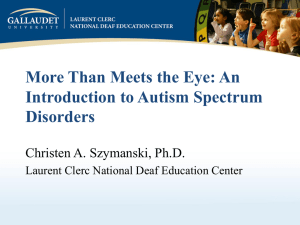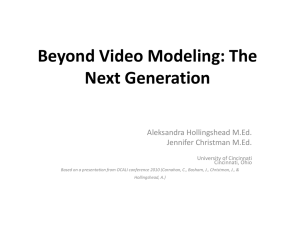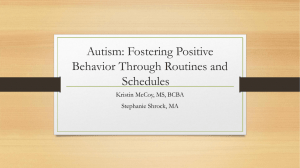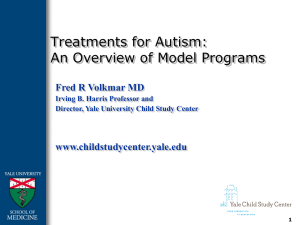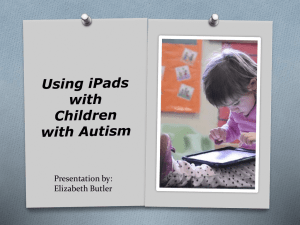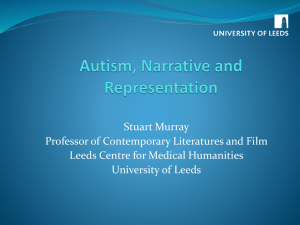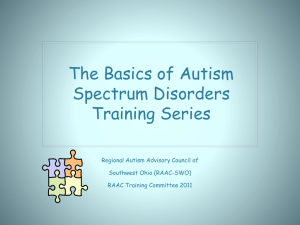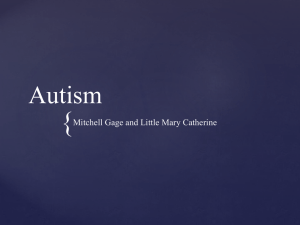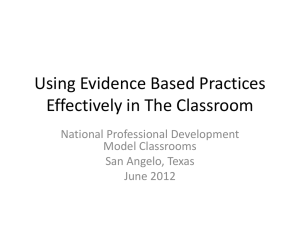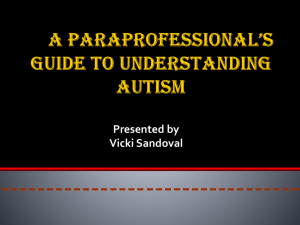Social attention and the Way to Play Programme
advertisement
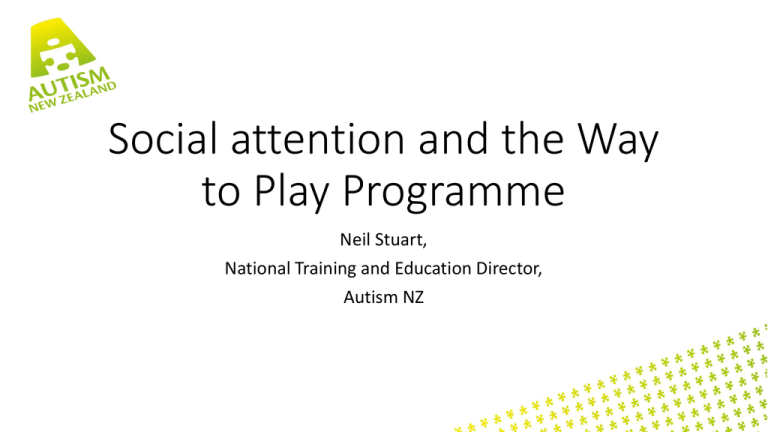
Social attention and the Way to Play Programme Neil Stuart, National Training and Education Director, Autism NZ Outline • Shared attention, referencing and joint attention and their importance • The capacities we need to target in early intervention • The Way to Play programme Where does it all begin Jim Sinclair, Don’t mourn for us • Grieve if you must for your own lost dreams, but don’t mourn for us. We are here and we’re waiting for you • The ways we relate are different. • You’re going to have to learn to back up to levels more basic than you’ve probably thought about before. • You’re going to have to give up the certainty that comes from being on your own familiar territory • If that prospect excites you, then come join us, in strength and in determination, in hope and in joy. The adventure of a lifetime is ahead of you Nothing new • Kanners descriptions • More interested in objects than people Does not look at peoples faces Rarely responds when called Not interested in other people or children his age but very interested in objects Regards other people as an interference Prefers objects to people Not interested in other people Does not appear to attend to or recognise mothers presence Lack of social relatedness as “extreme aloneness” So, we must improve eye contact!! Too much attention paid to the quantity and not enough attention paid to the quality of looking. Why do people look rather than the behaviour itself Uneven repertoire • Not all non verbal social communication abilities are impacted • Hardly any difficulty in requesting skills, some difficulties in turn taking skills but lots of difficulty in joint attention skills • Imperative vs declarative Non verbal declarative joint attention skills • Shared attention • Referential gazing • Joint attention Shared attention • Emotional regulation • Understanding of non verbal communication aspects of the face • Why we look Share emotion Celebrate Anticipation For information Referential gazing Joint attention • Widely recognised as one of the pivotal skills for sociability, communication and learning Early Intervention • Targeting pivotal capacities for later learning • “There is evidence that addressing ‘pivotal’ areas will have the greatest probability of positive effects in many areas of functioning” • “need to be engaged in developmentally appropriate activities or interactions for at least 15 to 25 hours per week” NZ ASD Guidelines Parents • Diagnosis • Hiaitus • ABA vs RDI vs ??? • OUGHTISM “Everyone tells me what I ought to do” • Pre school pressure cooker ???????? • Pivotal response training • Incidental teaching • Early Start Denver model • Relationship Development Intervention • Floortime • SCERTS • TEACCH • Not the differences between the programmes it is the similarities that are important Similarities • Clearly defined, developmentally appropriate goals • Intervention to take place in the natural setting, eg the home, kindy • Delivered by parents caregivers, empowered and supported by coaches • Incorporating the intervention into the daily routines of the cultural values of the family Back to the parents 55% of the parents agreed a lot or strongly agreed that their child played alone most of the time 82% of the parents agreed a lot or strongly agreed that their child controlled how they played together 95% of the parents agreed, agreed a lot or strongly agreed that their children had to play the same way each time they played together 55% of the parents agreed a lot or strongly agreed that their child was only interested in playing the same games 66% of the parents found it difficult playing with their child Autism NZ Play Survey The dark alley Autism NZ • Development of a programme that can improve parent’s, caregivers and support workers confidence to engage with their young child through play, in order to develop necessary joint attentional capacities History • Gary Davidson, Music Therapist, Julie Timmins, SLT, Neil Stuart, Educator, Building a relationship with a child with Autism, 2002 Autism Conference • Oaklynn Special School, Experience Sharing, Julie Timmins, Elena Antipova, SLT, Debbie May, SLT, Neil Stuart, Educator • 2 studies • RASCAL, Julie Timmins, Tanya Catterall, Parent, Jon Manson, Behaviour Support Specialist, Neil Stuart, Educator • Using the strengths of children with Autism to support them where they struggle Pattern, memory and variation Overcoming the dark alley Pattern – a repeating set of actions, done together Variations – slight changes though still retaining the original pattern A memory catch phrase – to strengthen the connection and remind in the future 6 simple easy to implement strategies • Pattern, memory and variation • Making Yourself Interesting • Modelling, Interrupting and recreating • Being the guide • Using toys as an extension of yourself • Knowing what’s important • EVERYDAY SITUATIONS • One day programme that travelled the country • Over 300 parents seen from Invercargill to Whangarei • A great seminar to learn how to play with my son and understand the approach that fits him best • I went home straight away and tried the strategies. They worked!! • Limitations – the W effect Way to Play at home • Way to Play at home (Pilot) • Attendance at way to play 1 day programme • 6 home visits, 3 group visits • Coaching the strategy with each visit • Video feedback • Significant differences – My child wants to play with me. I’m not scared any more that the play is going to stop. He initiates the games we have played together. He seems more connected Way to Play online • Rural and remote - Way to Play online • Public space and a private space • Able to upload videos and receive coaching • 6 lessons online • Able to connect locally and nationally – own space Play • Play’s not just for children!!! • Got to keep playing • Questions? • Many thanks to the parents and their children, Yuki Okamura, artist,


